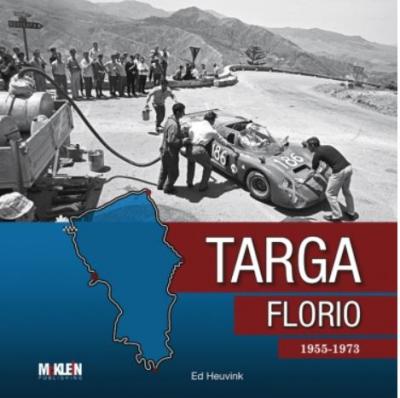
The definitive record of the twentieth century’s preeminent car builder and racer is now available in an updated paperback edition. It was motoring author Rinsey Mills’ passion for AC cars and motorsports history that led to his first meeting with Carroll Shelby. His suggestion that they should collaborate in order to create an accurate record of Shelby’s life and achievements at first was rebuffed but later taken up with enthusiasm. This authorized biography is the result. Carroll Shelby: The Authorized Biography was a long time in the making, as Mills left no stone unturned in his quest to produce the complete study of Shelby’s remarkable life. He carried out extensive research and conducted numerous interviews, fully capturing the narrative of Carroll Shelby within and outside of the automotive racing world: his childhood in Texas, wartime tenure with the Army Air Force, and postwar entrepreneurship; his earliest race wins in 1952 and his legendary 1959 victory at the 24 Hours of Le Mans; his monumental release of the first Cobra and the formation of Shelby American in 1962; his historical partnership with Ford that would last for decades; all the way through to Shelby’s personal hobbies, travels, and present-day legacy. Fascinating photographs from Shelby’s personal collection complete a book whose original hardcover edition was published mere weeks before his passing, making Carroll Shelby: The Authorized Biography a magnificent and lasting tribute to one of the greatest automotive figures of the twentieth century.
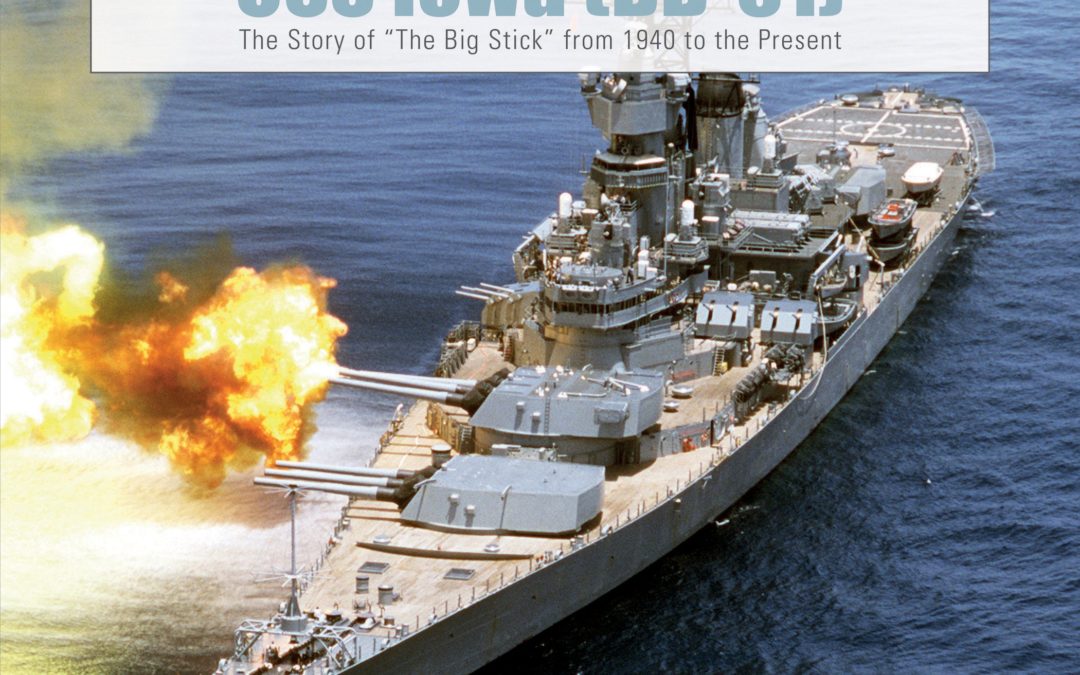
The USS Iowa (BB-61) was the lead ship in the United States Navy’s last, and most battle-worthy, battleship class, which also included the New Jersey, Wisconsin, and Missouri. This volume explores Iowa’s design, construction, launching, and commissioning, as well as its extensive wartime activities in both World War II and Korea. Also covered are its post-Korea years in the reserve “mothball fleet,” recommissioning in 1984, and coverage of the tragic 1989 turret explosion that killed forty-seven sailors. The carefully researched photos, many of which have never before been published, are reproduced in remarkable clarity, and coupled with descriptive and informative captions, this book puts the reader on the deck of this historic warship throughout her history.
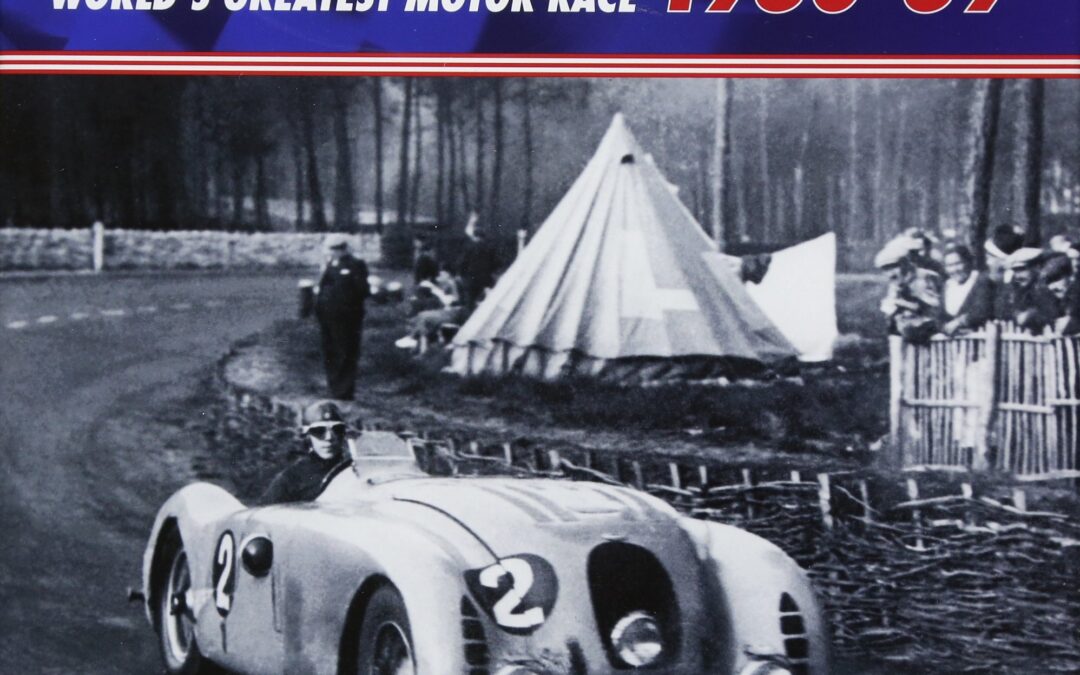
Officially licensed with the ACO, the organisers of the annual Le Mans 24 Hours race, this sumptuous book is the seventh title in this decade-by-decade series and completes coverage of the endurance classic from its very beginning to the end of the 20th century. This title covers the nine races of the 1930s (no race was held in 1936) in which honours were divided between Italian, French and British manufacturers. Each race is exhaustively covered in vivid photographs, an insightful commentary providing more detailed information than has ever been published about the period, and full statistics. Compiled by an acknowledged authority of this legendary race, this series of books is treasured by all enthusiasts of sports car racing.
In the 1930 race Bentley achieved its fourth consecutive success, Woolf Barnato and Glen Kidston the winning drivers in the very same ‘Speed Six’ with which they had won in 1929.
Two of Britain’s greats of the era, Earl Howe and Henry Birkin, won for Alfa Romeo in 1931, beginning a four-race victory streak for the Italian manufacturer.
Tazio Nuvolari, the outstanding Grand Prix ace of the pre-war decade, secured an intensely dramatic last-lap victory in 1933 in the closest Le Mans finish to date.
Lagonda (1935) and Delahaye (1938) secured a win each, while Bugatti took two with the great Jean-Pierre Wimille driving its innovative Type 57 ‘Tank’ cars, with all-enclosing bodywork.
Highly detailed year-by-year treatment of the decade’s nine races, giving unprecedented depth of information and photographic coverage for each year.
Official status provides a number of unique features, including the reproduction of photographs and full-colour race poster artwork from the ACO’s archives.Complete data for each year includes technical regulations, entry list, circuit changes (with diagram), full results and category awards.
The whole work is beautifully designed and presented.

When a sickly, half-deaf, forty-seven-year-old retired U.S. Army Air Corps Captain went to China in 1937 to survey Chiang Kai-shek’s Chinese Air Force, little did the world know this would be the man to stem the Japanese tide in the Far East. Almost every military expert predicted his handful of pilots of the American Volunteer Group would not last three weeks. Yet in seven months in 1942, the AVG, fighting a rear-guard action over Burma, China, Thailand, and French Indonesia, destroyed a confirmed 199 planes, with another 153 “probables” as well. They did this losing only four pilots and twelve P-40s in air combat and sixty-one on the ground.
In this definitive biography of General Claire Chennault, veteran reporter Jack Samson offers a rare and fascinating inside look at this legendary man behind the Flying Tigers.
Unlike Eisenhower and MacArthur, Chennault was no saintly military leader. He was a chain-smoking, bourbon-drinking, womanizing man. He was the kind of leader his men knew could and did fly better than they–in any kind of plane. But first and last, he was a fighter–a tough, single-minded warrior who was never confused by who the enemy was in Asia, regardless of what the State Department thought.
Following Chennault from this command of the Fourteenth U.S. Army Air Force during World War II to the part of his life that is not well known–the intriguing postwar years in China and Formosa, where his Civilian Air Transport (CAT) became the scourge of the Red Chinese–The Flying Tiger is an extraordinary portrait of one of America’s great military commanders.

To counter the threat from a Soviet “blue water” navy, a large investment was made in the years from 1945 until the 1960s to develop maritime patrol aircraft. For years the Air Staff and the ministries argued over what type should replace the Shackleton, including variants of the Vulcan, the Britannia, VC10 and Trident, before one man strode into the MoD building in 1964, settling the argument with what became Nimrod.
To seek and destroy Soviet submarines, Shackletons and Nimrods carried many advanced weapons and sensors, but also played a role in saving lives at sea. Then, after forty years’ service, the Nimrods were withdrawn without replacement after one of the most expensive procurement disasters.
Chris Gibson examines the post-war genesis of the RAF’s maritime patrol aircraft, a process that led to Nimrod. From the last flying boats, attempts to improve then replace the Shackleton and ultimately the Nimrod itself, Gibson provides a fascinating insight into the aircraft, weapons and sensors developed to counter the Soviet submarine threat.
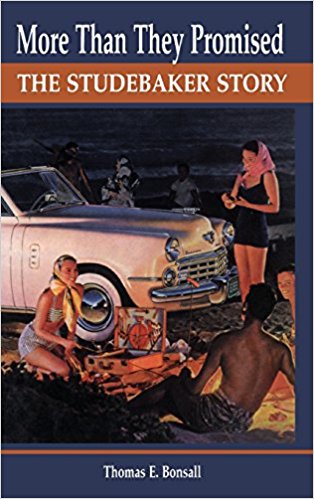
This lavishly illustrated book on the famous automobile manufacturer traces the Studebaker family from its arrival in America in 1736, to the beginnings of the wagon business under John M. Studebaker and his brothers in the nineteenth century, to the family’s entry into the automobile industry in 1902, to the last Studebaker automobile to roll off the assembly line in 1966. The book, however, is much more than the story of a family business; it is also, in microcosm, the story of the industrial development of America. The Studebakers had always been industrialists in the sense that they made their living by manufacturing things, albeit on a small scale. When the Industrial Revolution hit the country with full force, spurred on by the Civil War, it transformed America from a rural-agrarian society into an urban-industrial one. The fortunes of the Studebaker family were transformed with it. As the title suggests, the Studebaker story was mostly one of success. Studebaker wagons and carriages were long noted for their quality and popularity, and so, too, were Studebaker automobiles. The 1953 Starliner and the 1963 Avanti, designed under Raymond Loewy’s direction, are widely regarded as among the most innovative examples of American industrial design. The book deals in detail with the soaring prosperity of the company in the 1920s, the bankruptcy and miraculous recovery in the 1930s, the stupendous success of the early post-World War II period, and the eventual decline of the company’s fortunes in the mid-1950s. It describes the development of such famous models as the Lark, Avanti, and Gran Tourisimo Hawk, with special attention paid to the Avanti II, a surprisingly successful spinoff from the dying company that continued to be produced until 1991. The final chapter, on why Studebaker died, is tightly reasoned and more convincing than previous theories. Throughout, the author has used personal incident and characterization to bring to life the rich, tumultuous history of one of America’s longest enduring industrial empires.
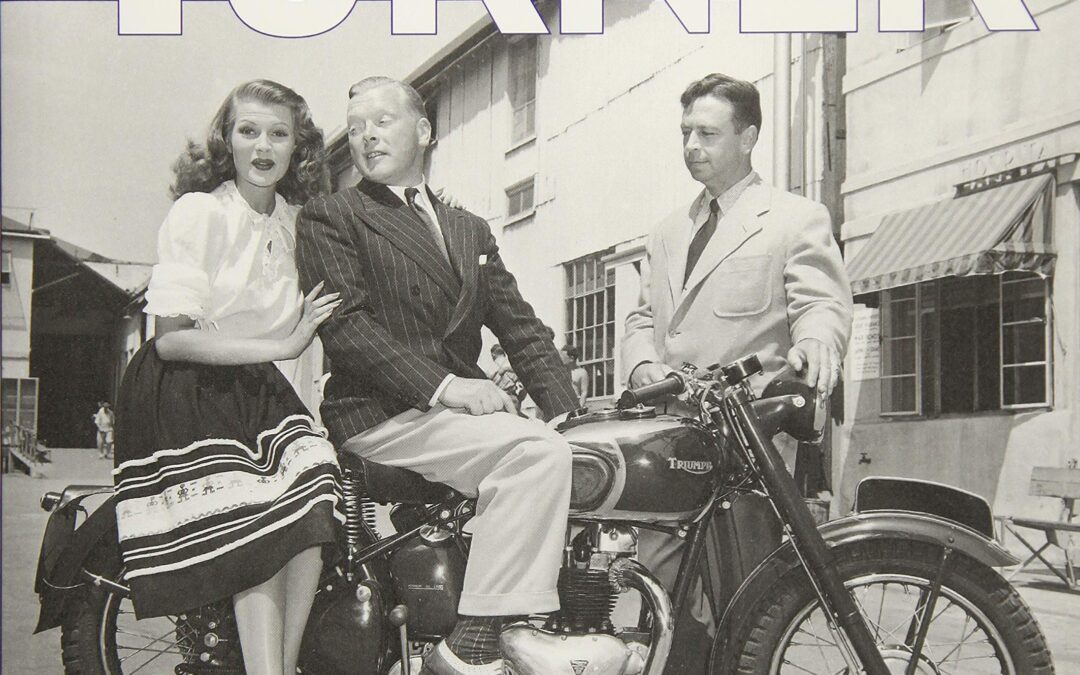
SOLD OUT
Reprinted after a long absence! For the first time, the life of Edward Turner, one of Britain’s most talented motorcycle designers, is revealed!
Although seen by many as an irascible man who ran a very tight ship, it is an inescapable fact that Triumph was a highly profitable, industry pushing company. Turner’s hugely successful sales campaign after World War 2 stunned American manufacturers, and had long-lasting repercussions on their own home market.
No one can deny the impact his Ariel Square Four made at the annual Motor Cycle Show in 1931, his superbly-styled single cylinder Tiger models in 1936, and his revolutionary Speed Twin that dominated the Show in 1937. Even more was to follow with his post-war Thunderbird and Bonneville twins.
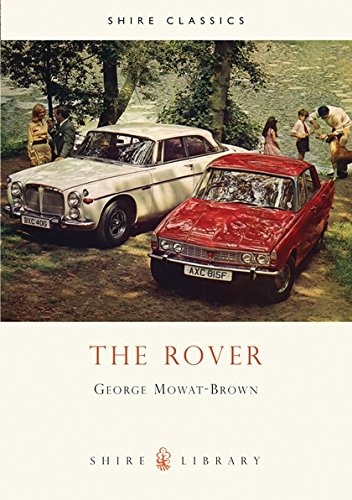
For over a century, no surviving marque so accurately charted the triumphs and tribulations of the British motor-manufacturing industry as Rover. This book traces the history of the company, starting with the cycle-making precursors of the Rover Company Limited. Covering the struggle through the Depression of the 1930s, and the expansions, mergers and contractions of the post-war period – the time of Rover’s greatest success – the author then discusses Rover’s placement within British Aerospace, the influence of the Japanese company Honda, and the ownership by BMW and the Phoenix Consortium. This book celebrates the history of Britain’s last volume car producer, up to its sale to the Nanjing Corporation of China.

An Adventure into Formula One During the 1.5 Liter Era
The 1961 season was the first year of the new 1.5 liter regulations in Formula 1. Out of all the German car manufacturers, only Porsche had the determination and the capability to enter this new class.
In the beginning, a Porsche Spyder was converted to a monoposto, called a Type 718, which was relatively successful. By 1962 Porsche had constructed four examples of its 804, racing three of them. The engine, chassis, and brakes were all individually crafted making the car perhaps the last real Silver Arrow. Dan Gurney gave the car its only wins, at the French Grand Prix at Reims and the non-championship Solitude Grand Prix, in Germany.
Wonderful, previously unpublished photographs, vivid recollections from the people who built and raced the cars, and complete statistics all combine to deliver a comprehensive overview of Porsche’s short but successful history in Formula 1. This book will surely fill a major gap in any Porsche collection. It is written by the same author team responsible for the hugely popular and equally in-depth Porsche 917—The Heroes, the Victories, the Myth.
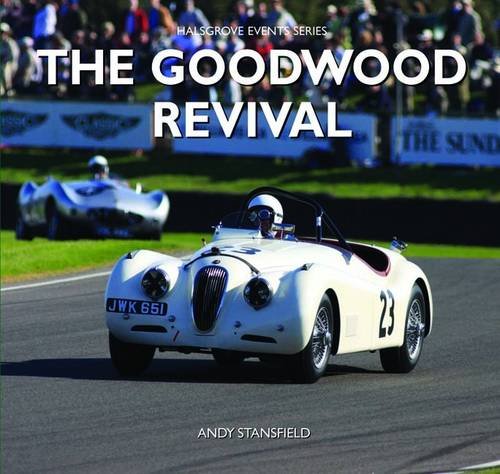
Goodwood House and its estate, home of the Earl and Countess of March, are synonymous with some of the finest aspects of English history. A magnificent mansion in a parkland setting at the foot of the South Downs, it was the seat of the 1st Duke of Richmond, born in 1672 and son of King Charles II. More recently, it was home to RAF Westhampnett during the Battle of Britain and it was from here that Douglas Bader flew his last mission.But Goodwood is also synonymous with racing, both of cars and horses. It was the 9th Duke of Richmond, Freddie March, who created Goodwood’s motor circuit, using the perimeter track of the wartime airfield to host the first post-war event at a permanent circuit.The spectating public, having been starved of track action since Brooklands closed in 1939, were enthusiastic and some 15,000 attended that first event. Fifty years later to the exact day, in the September of 1998, the circuit was reopened for the purpose of historic motor racing by the Duke’s grandson, the present Earl of March.
Hence the creation of the Goodwood Revival, a three day event each September which commemorates motor racing legends, both cars and drivers, from the period 1948 to 1966 along with aircraft associated with that period and the end of World War II. Following the first day’s practice and qualifying track action, Saturday and Sunday each feature eight races, brimful of action and spectacle, interspersed with track parades and air displays.The jewel in the crown is undoubtedly the one-hour RACTT Celebration race with a starting grid line-up which has been valued at a staggering £85 million, driven by some of the greatest names in motor racing history.
All of this and more is captured in this stupendous new book by master-photographer Andy Stansfield, containing over 140 action-packed images which exude nostalgia for the glories of Britain’s motor racing past.”

On June 19, 1953, Harry Truman got up early, packed the trunk of his Chrysler New Yorker, and did something no other former president has done before or since: he hit the road. No Secret Service protection. No traveling press. Just Harry and his childhood sweetheart Bess, off to visit old friends, take in a Broadway play, celebrate their wedding anniversary in the Big Apple, and blow a bit of the money he’d just received to write his memoirs. Hopefully incognito.
In this lively history, author Matthew Algeo meticulously details how Truman’s plan to blend in went wonderfully awry. Fellow diners, bellhops, cabbies, squealing teenagers at a Future Homemakers of America convention, and one very by-the-book Pennsylvania state trooper all unknowingly conspired to blow his cover. Algeo revisits the Trumans’ route, staying at the same hotels and eating at the same diners, and takes readers on brief detours into topics such as the postwar American auto industry, McCarthyism, the nation’s highway system, and the decline of Main Street America. By the end of the 2,500-mile journey, you will have a new and heartfelt appreciation for America’s last citizen-president.
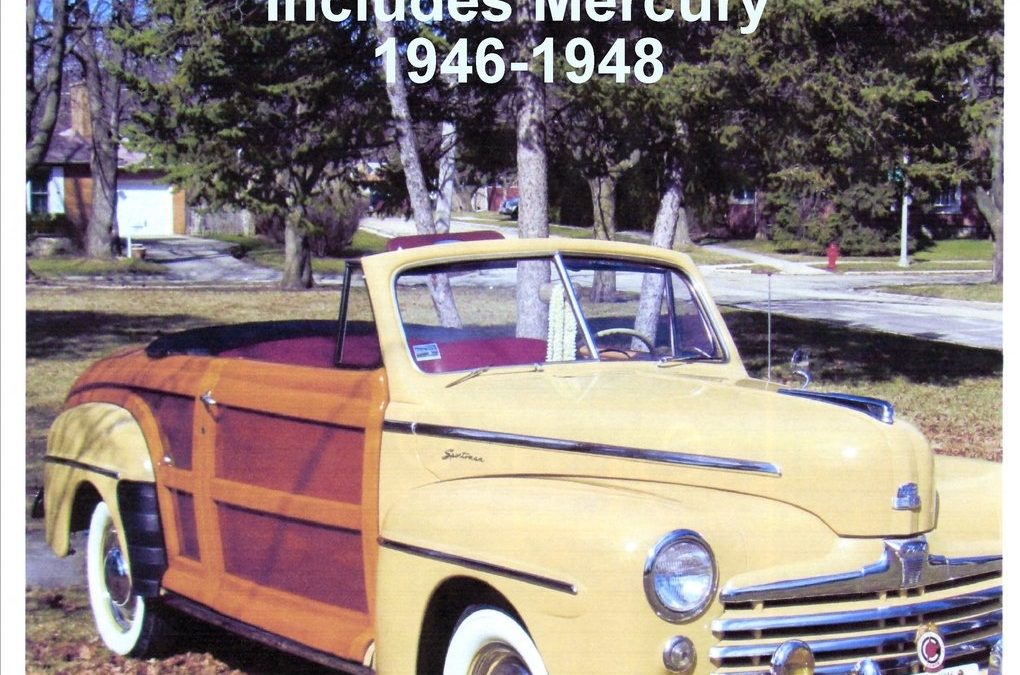
In 1945 Henry Ford II and designer E.T. Gergorie got together and come up with the “Sportsman. A woodie convertible that they thought might perk up the warmed over 1942s that would become the 1946 models. A prototype was built in October 1945 and was given a green light for full production. Sales were meager and production only lasted two years, but the “Sportsman” left an indelible mark on post World War II auto history. This book gives you a close-up look at both the Ford and Mercury “Sportsman”.
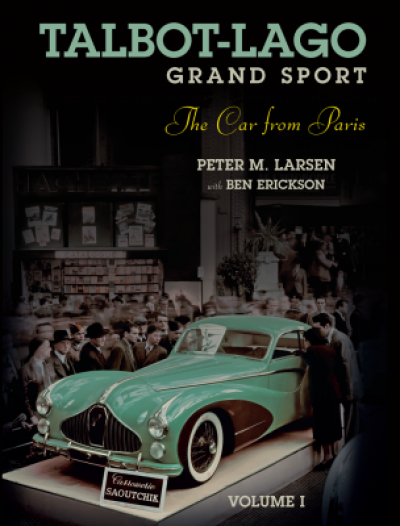
SOLD OUT
The Talbot-Lago Grand Sport was an automobile destined for the grand cru sportsman and chic Parisian society in equal measure. It was a grand gesture, and the final flowering in France of the great tradition of the truly custom motorcar.
The chassis was built to carry coachwork that was the last expression anywhere in the world of grand style and luxury.
The Grand Sport was outrageously exclusive and something for the very few. Not just because of its price, which was stratospheric, or its limited practicality, which was irrelevant: this was a car that was chic, ritzy, aristocratic and sharp as a knife all at once.
Volume I tells the story of how the Grand Sport was born in the bleak post-war years. It is the story of how Talbot-Lago came into being, and the incredible tale of Anthony Lago’s life with his rise from refugee to penniless car dealer in London and finally luxury car maker in France. The post-war history of the marque is dealt with in great detail, additionally there is an in-depth discussion of the chassis and its components. A large section is devoted to a history of every single carrossier who bodied a Grand Sport chassis.
Volume II contains a detailed chassis by chassis history of every single Grand Sport laid down by the factory
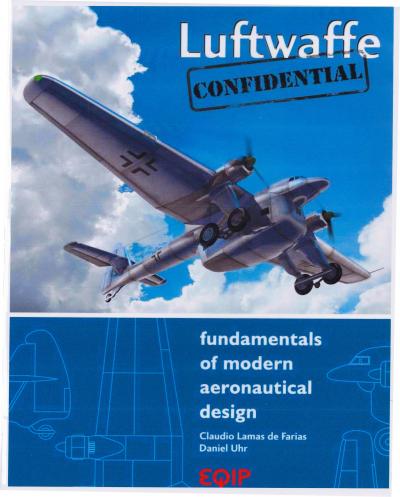
The Luftwaffe’s Influence on Modern Aircraft Design
Did Germany lose the war but win the space race?
Innovative aircraft designs that came off German drawing boards during World War II may not have helped the Third Reich last a thousand years, but the designs may just influence aircraft design for that long.
Innovations that include things such as swept wings, delta wings, T-tails, VTOL, as well as jet and rocket engines all find their origins on German drawing boards. Post war aircraft such as the MIG-15,and North American F-86 Sabre as well as the Concorde, Lockheed B-2, the Space Shuttle, and even modern sailplanes all owe elements of their design to WWII German engineers and designers.
This book examines those wartime German contributions and puts them into the broader context of post war aircraft designs that were created by aerospace engineers in Europe, the Soviet Union and North and South America.
Hardbound, profusely illustrated
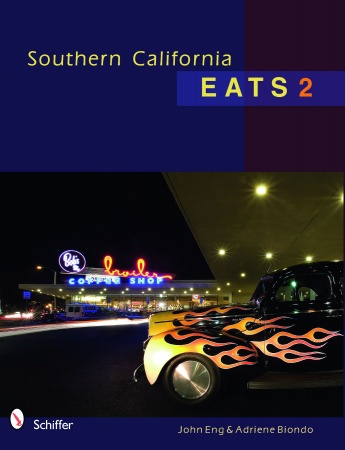
Take a photographic journey through Southern California and step back in time to visit fast food prototypes, drive-ins, bowling alley snack bars, space age coffee shops, roadside cafes, and fine dining destinations. Enjoy photo excursions to historic landmarks like the Dal Rae and Dresden Restaurant, the last remaining winery/restaurant in Los Angeles, a desert outpost cafe, and a giant chocolate donut you can drive-thru. A fun, informative, and visual treat with something for everyone.
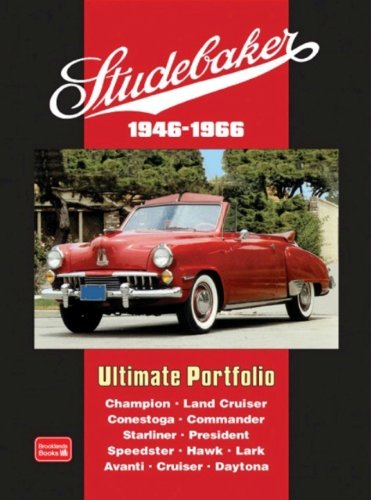
Studebaker released their ‘coming or going’ sedans in 1947 which were styled in collaboration with the famous Raymond Loewy Studios, and were the first in America to come out with a completely new postwar style of automobile. The fact that they were pre-war mechanically made no difference to a car-starved America – it was the style that counted. Sales were high initially, but after 1950 numbers started to decline. In 1953 Studebaker introduced the well-received Starliner series of convertibles. The Silver and Golden Hawk were then developed from these coupes. The compact Lark was introduced in 1959, which brought a fresh new style to the product range, and some excitement from the V8-engined versions. Then came the stunning Avanti. Unfortunately, fewer than 5,000 were made, each one at a loss. The company was unable to generate sufficient profit to finance design and development and so the Lark became the last of a famous automobile line when the company closed its doors in Canada in 1966. It ended a 117 year history of manufacturing transportation by the Studebaker brothers.

While many respectable books on Billy the Kid aim to demystify his illusory life, this one-of-a-kind collection proudly has no such intention. Find all of the untold and potentially true but very unlikely and highly embellished stories of the Kids life, death and enthralling life thereafter. Be thrilled by sightings of Billy’s ghost riding through old Fort Sumner and marvel at his search for the fabled Lost Adams Diggings. Wonder at the mysterious thefts of his tombstone and discover the famed desperados dozen or so doppelgangers who posthumously popped up all across the Southwest. Courtesy of yarn-spinning raconteurs of yore, author John LeMay unveils the many forgotten and discarded tales of the legendary William H. Bonney, an everlasting emblem of the American West.
Autobooks-Aerobooks 2900 W. Magnolia Blvd. Burbank, CA 91505 (818) 845-0707 Hours: Tuesday-Friday 10:00 AM – 6:00 PM Saturday 10:00 AM – 6:00 PM Closed Sunday and Monday Accept Credit Cards gift cardYES, We have Gift Cards - Click Here AUTOBOOKS IS OPEN...
Autobooks-Aerobooks 2900 W. Magnolia Blvd. Burbank, CA 91505 (818) 845-0707 Hours: Tuesday-Friday 10:00 AM – 6:00 PM Saturday 9:00 AM – 6:00 PM "Cars & Coffee" on Saturday morning! Closed Sunday and Monday Accept Credit Cards YES, We have Gift Cards - Click Here...
















